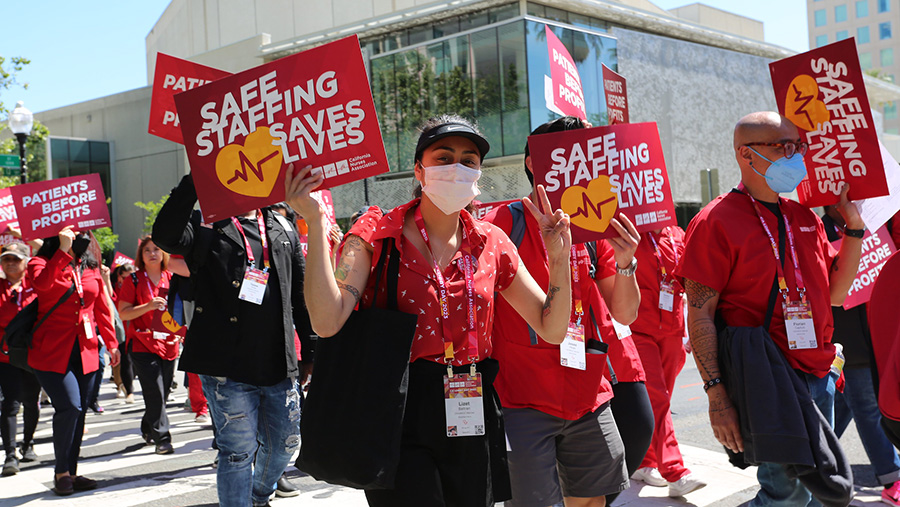About California safe staffing ratios

Some nurses call it “nurse-to-patient ratios.” Others call it “safe staffing” or “patient limits.” No matter how we label the concept, registered nurses across the United States and, indeed, the globe understand the need to set a minimum number of nurses to safely care for a certain number of patients, with adjustments to increase nurse staffing based on patient acuity. Staffing decisions made by hospital administrators based on budgetary rather than clinical considerations do not ensure patients are receiving optimal care.
As a science-based profession nurses know better, as a holistic-based profession nurses understand the need for individualized patient care. We know that a lower assignment of patients means more time spent with each patient , time to comfort, time to monitor and assess for subtle changes, time to intervene, educate a patient, time to thoroughly explain the course of treatment, and reassure a worried family member. We became nurses to help people, and safe staffing plays an integral role in us fulfilling our caring mission.
Every patient deserves a single standard of high-quality care. Decades of research have documented how safe staffing reduces patient mortality, re-admission to the hospital post discharge, and recovery. Ratios, coupled with nurses’ powerful voice of advocacy, secured in California law and regulation, and in our union contracts, protect our patients from complications that arise from missed care such as medical errors, health care disparities, infections, and so much more.
Currently, California is the only state to enact an enforceable RN-to-patient staffing law, thanks to the determined, multi-year efforts of members of the California Nurses Association. Since the law went into effect in all California acute-care hospitals in 2004, nurses have come back to the bedside to provide patient care that more fully reflects the art and science that our profession is founded upon.
CNA was the author, sponsor, and driving force behind the landmark law, which was signed in 1999. The hospital industry and its allies have tried repeatedly to overturn or weaken the law, but CNA members continue to successfully defend ratios.
A seminal 2010 University of Pennsylvania study showed that the California law saves thousands of patient lives, and that if California’s 1:5 ratios were matched, surgical units in New Jersey hospitals would have 14 percent fewer deaths and Pennsylvania 11 percent fewer deaths.